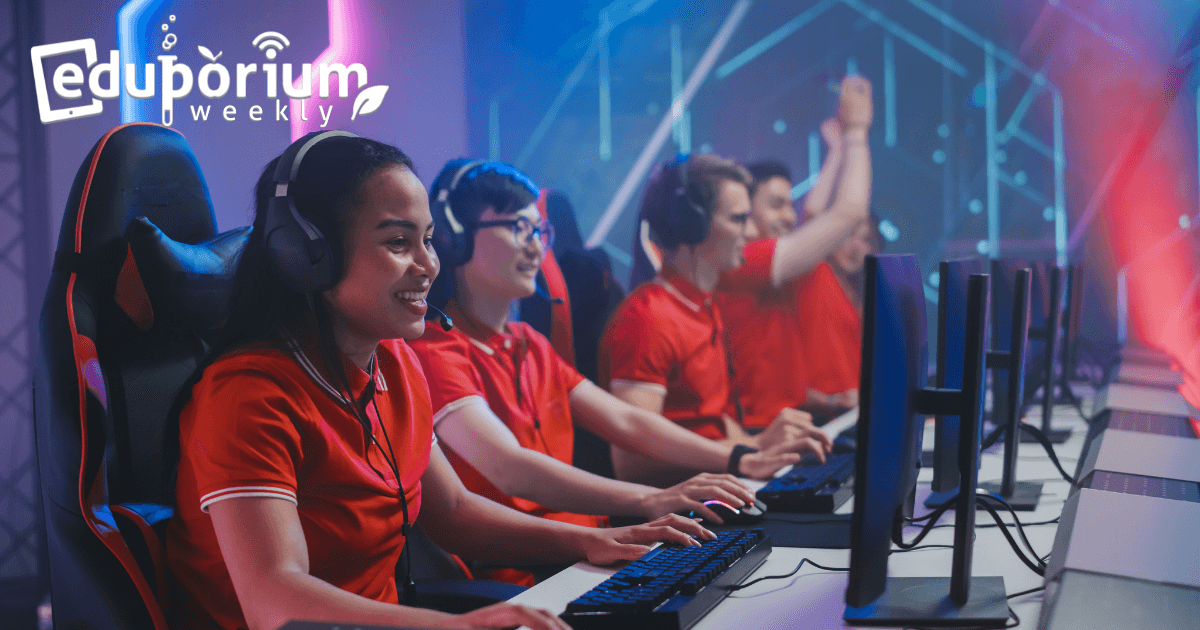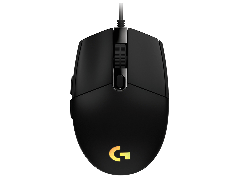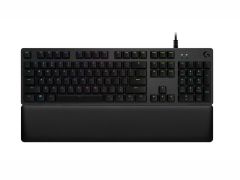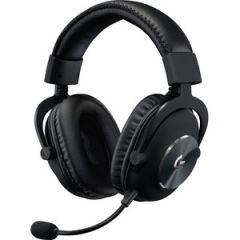Esports in the education world is growing rapidly with high school students and administrators all taking notice. Already one of the most talked about trends of the past couple years, esports is helping pave the way for a revolution in how both adults and teens think about gaming. Gaming is no longer seen, at best, as a hobby and, at worst, a health-deterring waste of time. Now, with all of the ways for school leaders to capitalize on this wildly popular trend, esports has become central in many students' lives. And, with high school esports, the statistics and benefits alone may surprise and should definitely intrigue you.
The Perception of Esports vs. Reality
To be fair, there are more than a few different realms of esports. These include large competitive settings, informal clubs, professional franchises, and, now interscholastic leagues. Esports has become so popular and beneficial, in fact, that many school athletic and technology directors have established school teams, leagues, and tournaments. Whether it's through PlayVS, the High School Esports League, or one of the other platforms, students can compete against other athletes with whatever types of stakes are available. As these students participate, it's not all about killing time and playing games, either. There are practices involved, strategy sessions to attend, meetings with coaches, and a whole lot of real-world connections.
Grades and finances.
One of the drawbacks teachers may associate with school esports is the perceived cost. It can be pricey to design, construct, and maintain a state-of-the-art gaming facility but that's also usually not completely necessary. One of the simplest ways to break it down is to compare school esports to every other school sport. Though it's not football, basketball, or soccer, esports participation provides students with many of the same benefits. The best players, for example, could potentially earn some college scholarships. It also requires students to excel academically or they will risk losing their spot on the team or become ineligible to participate. Like all school sports, the emphasis on kids being student-athletes is very much present.
Esports and future opportunities.
The esports industry, beyond the high school level, is being popularized via a number of different outlets. One of those is certainly media and live streaming matches on platforms like YouTube or Twitch. While it might seem unnecessary to casual esports observers, there are actually millions of people who crave this type of content and these types of experiences. As for students, it exposes them to just one of the career opportunities made possible by this new industry. It's not uncommon for top gamers to receive millions of views each month, which may seem weird to think about since esports is essentially still in its infancy. So, yes, we'd definitely say there's more than solitude and laziness associated with this type of gaming.
Understanding How Esports Can Impact Students
Some of the ways in which esports gets attention could certainly affect many high school students. In most cases, these students are participating to feel like a part of a team, make friends, fill time with a hobby they enjoy, or to just have fun and learn some new things. Many of them aren't thinking about a future in esports when they first start out, though that's sometimes quick to change. We know these esports scholarships to compete at all different types of colleges are growing every year. This is important because it's led college coaches and recruiters to be on the lookout for top talent. For students hoping to catch their eye, they'll need a mix of gaming prowess, commitment, soft skills, and academics.
Knowing what the future may hold.
In some unique cases, esports can propel students towards futures they wouldn't have considered a few years ago. Some recruiting efforts, for example, help students attend college with financial assistance. In more rare cases, a recruiter might sign young adults directly to professional teams. Though it's still a long shot that a high school gamer would be recruited in either format, coaches are aware of these possibilities and this helps them structure the team environments in advantageous ways. It's also partly why esports in schools continue to grow. Another is that it gives students an outlet or environment in which they feel like they belong. As this continues to take shape, interscholastic sports and esports continue to merge more closely together.
Understanding the costs.
Starting up an esports program at your school will, of course, cost some money. Like every other program that's beneficial for kids, however, it's more important to think about the positive outcomes, though those will likely take a couple of years to fully come into focus. Depending on budgets, space, and how in-depth you start out, good esports equipment could cost near $1,000 per station. This typically includes their PC, headphones, keyboard, and mouse. Gamers may also need chairs and a room for practices and matches. While that may seem like a lot, keep in mind that the budgets for other high school sports, like football, are typically tens of thousands of dollars per year for the average school and over $100,000 at some big ones. With all the potential benefits for students, it might be worth reallocating a bit of that for esports.
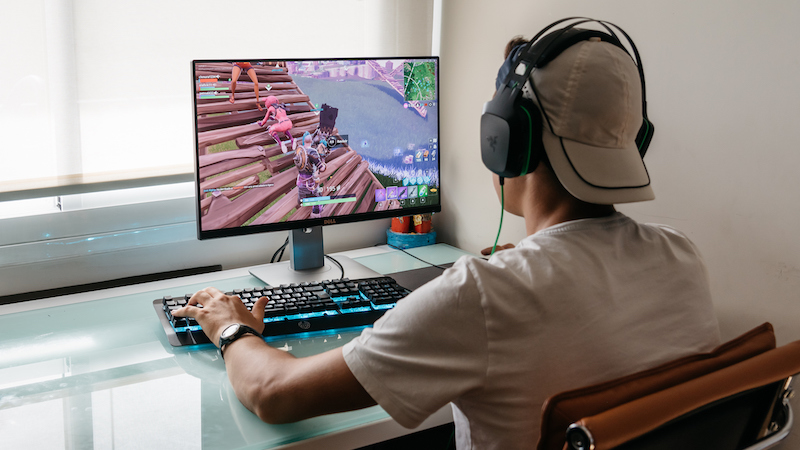
Esports Opportunities Beyond Going Pro
Some students join these esports programs because they believe they wouldn't fit in or enjoy being a part of other school clubs or teams. Others are instantly excited about new esports programs because gaming has long been a passion of theirs. Whatever their reasons for joining, a large chunk of those athletes might realize they truly enjoy it. So, where does this leave them once they complete high school or even between seasons? If students aren't fortunate enough to receive a share of the millions of dollars in current esports scholarships or ultimately play competitively for a living (very few do), there are plenty of ways for them to remain tied to the industry. From marketing to coaching and streaming, esports opportunities are rapidly increasing but it starts with having a foundation.
Building a foundation through equity.
One of the good things about esports at the high school level is that it's fairly equitable. What we mean by this is that a student-athlete is less likely to feel intimidated by any opponents or teammates based on physical stature or perceived superior skill. Obviously, esports doesn't really require physical prowess but gamers can separate themselves with their mental toughness, ability to communicate, and how they react under pressure. Of course, these are also skills that genuinely translate to real-world success, too. Some parents and educators might not naturally make this connection but it's a very real byproduct of esports participation. In schools that have esports programs, students can experience improved connectedness, engagement, grades, and attendance, making these programs appealing.
Skills for any type of future.
Ultimately, we aim to draw attention to how esports is similar to other interscholastic sports. Being part of an esports team takes commitment—students must commit to themselves and to their teammates. It also requires them—whether they're fully comfortable or not—to adopt a greater leadership role. Both of these things are necessary for them in their future, too. Even if they don't pursue a career in the esports industry, which most of them probably won't do, the skills they do develop are still valuable. Being able to recognize problems, communicate potential solutions, and even troubleshoot tech difficulties are all useful. Whatever career path they choose, the experiences students have in organized gaming could prove very helpful.
Esports Statistics Around the World
Despite its worldwide popularity only going back a few years at this point, esports is responsible for some big numbers globally. While not all these figures are specifically relevant for high school or college gamers, they're something to keep in mind and monitor. School esports programs, especially when just starting out, certainly won't compare with some of the most prominent. However, just as kids have admired professional athletes for decades, esports gamers can do the same. This could also give them a sense of what daily life within this industry is like. More importantly, however, paying close attention could help them pick up on the attitudes, communication strategies, and commitment they'd need to excel, themselves.
Revenue numbers support esports popularity and growth.
Esports is growing at such a rapid rate that these statistics will likely shift sooner rather than later. For now, however, it's estimated that worldwide esports revenue exceeded $1 billion in 2021, coming in around $1.8 billion globally. That's up from about $947 million in 2020. The fact that esports revenue has nearly doubled in the last two years should paint a picture of this popularity. In a year unlike any other (2020), many people turned to something they've known throughout their lives: gaming. Since people weren't always able to be together, connecting to play games online helped keep some of those relationships alive. This is the same for high school esports participants. While all other sports got cancelled, all they needed was access to the Internet to continue (at least partially) from home while keeping in touch with friends and teammates.
Money leads to new career opportunities.
As for viewership, it's grown from a few hundred million casual viewers each year to a few hundred million serious and frequent viewers. Total prize pools and payments to esports athletes are nearing $100 million a year. Even in terms of media, since so many people want to watch these high-stakes tournaments and fully immerse themselves in the culture of esports, media rights are responsible for over $200 million of revenue. Also, as you'd probably expect, revenue numbers are only expected to jump over the next couple of years. In relaying these numbers to student esports participants, it's key to paint realistic pictures, however. They may not make it big, but they could play a role in any number of these profitable industries.
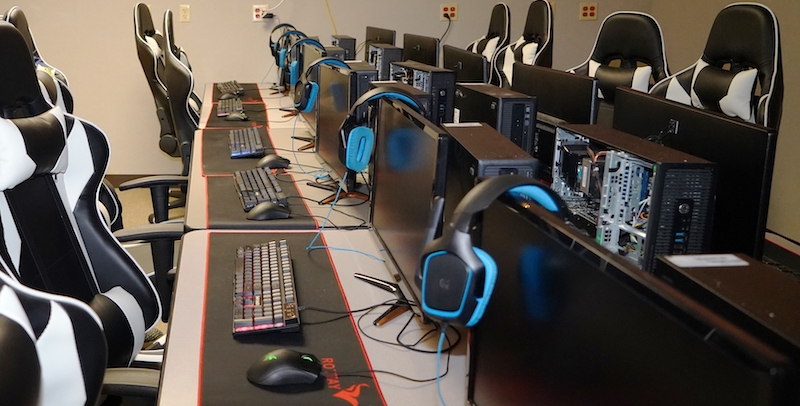
Tips for Designing a School Esports Space
If you're convinced that a school esports program is a good investment, your next thought might be about logistics. In our esports white paper, we talked a lot about these basic necessities, including some things that could go overlooked. Whether it's finding a willing coach or rounding up enough players, it also might not be easy. Then again, a new opportunity to be a part of something they love could immediately excite a group of students. Whatever your case, one of the crucial elements to launching an esports team or club is securing a dedicated space for meetings, practices, and matches. Though you might not realize it, esports is another five-day-a-week interscholastic sport while in-season. This means each team needs somewhere to host matches or practices every day—something school leaders must consider in regards to space.
Flexibility in design.
Depending on how strong you start, you might just need a small room or a larger space if there's a higher turnout. As the program evolves, equipment, space, and other needs will likely grow, too. If it's just a few kids at first, you'll still need a lot of the same equipment, though. Therefore, the best school esports labs are flexible in their design. Even if space and time are tight, however, it still might be worth trying to be as flexible as possible. This is because esports (especially in K-12 schools) is still so new and could soon be completely different. If you design a fixed space with few opportunities for evolution, it may just become a poor investment of time and money. In terms of flexibility, even a basic set-up helps ensure the space can be used for additional purposes—like clubs or classes during the day.
Technical specifications in esports labs.
Besides flexibility in the design, there are plenty of technical considerations to think about as well. For the best gaming experience, esports tournaments and matches require high-speed Internet and high-powered processors. Of course, this may increase costs, so keep that in mind—though they're more affordable and reliable than perceived. It's also best to opt for strong monitors to create a crystal clear gaming experience. Also, wired mice are more effective than their wireless counterparts. Finally, if you've done any research on esports, you might realize these recommendations are pretty common. But, comfort for esports athletes is another factor. Since they're sitting for long periods of time, comfortable and portable chairs are ideal.
If you're intrigued about esports programs in education and would like to learn more, feel free to contact us and set up a conversation. For the latest EdTech, STEAM, and 21st century education news, follow us on Twitter and Instagram. Like us on Facebook, too, or sign up for our newsletter for our latest product announcements and offerings. If you have an idea for an Eduporium Weekly theme, send us a message on any of our social media accounts or comment below.



